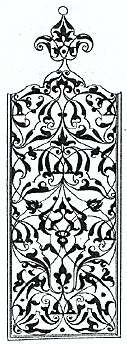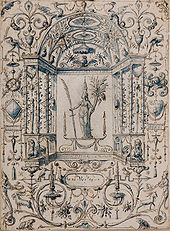

Moresque is an obsolete alternative term to "Moorish" in English, and in the arts has some specific meanings. By itself, the word is used to describe the stylized plant-based forms of tendrils and leaves found in ornament and decoration in the applied arts in Renaissance Europe that are derived from the arabesque patterns of Islamic ornament. Like their Islamic ancestors, they differ from the typical European plant scroll in being many-branched and spreading rather than forming a line in one direction. The use of half-leaves with their longest side running along the stem is typical for both.
First found in 15th-century Italy, especially Venice, moresques continue in the Mannerist and Northern Mannerist styles of the 16th century.
© MMXXIII Rich X Search. We shall prevail. All rights reserved. Rich X Search
